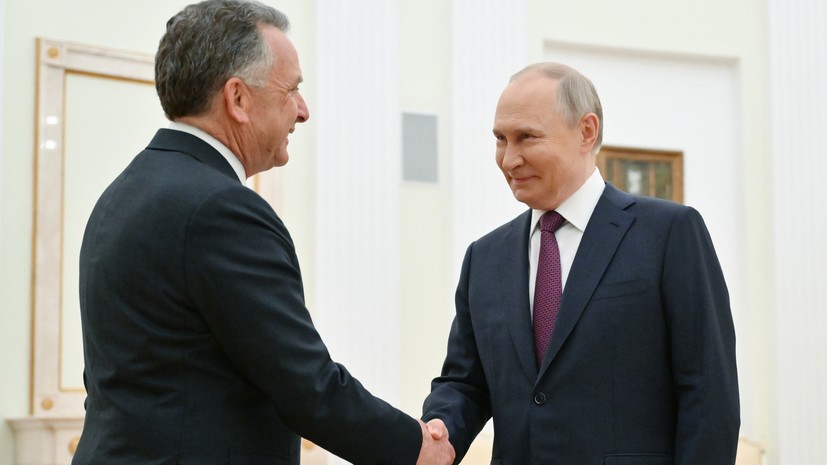Trump’s Tariff War Is a Test of American Democracy

Analysis
Trump’s Tariff War Is a Test of American Democracy
Congress has a chance to reassert itself against the president’s power grab.
Foreign Policy illustration/IStock photos
U.S. President Donald Trump is accused of having started a global trade war. That’s wrong. The U.S. Congress is responsible for it, and only the U.S. Congress can stop it. If the core institution of American democracy cannot reassert its clear constitutional authority over U.S. trade policy, then the chaos of the past two months will continue for the next four years. Indeed, trade may be the best opportunity the world has for American democracy to reassert itself against the unfettered power being wielded by the current occupant of the White House.
Amid Trump’s sweeping claims of authority to slap tariffs on any country for whatever reason he chooses, it is easy to lose sight of what the law says: Tariffs are the responsibility of Congress, not the president. As the late trade scholar I. M. Destler put it, “[I]n no sphere of government policy can the primacy of the legislative branch be clearer: Congress reigns supreme on trade, unless and until it decides otherwise.” Unfortunately, giving up its authority over trade is exactly what Congress decided, beginning in the pre-Trump world. Decades of institutional self-flagellation on trade have left the 535-member Congress so weak that it cannot perform its core duties, even when the actions of the president are harming their constituents and will likely hurt their chances for reelection.
U.S. President Donald Trump is accused of having started a global trade war. That’s wrong. The U.S. Congress is responsible for it, and only the U.S. Congress can stop it. If the core institution of American democracy cannot reassert its clear constitutional authority over U.S. trade policy, then the chaos of the past two months will continue for the next four years. Indeed, trade may be the best opportunity the world has for American democracy to reassert itself against the unfettered power being wielded by the current occupant of the White House.
Amid Trump’s sweeping claims of authority to slap tariffs on any country for whatever reason he chooses, it is easy to lose sight of what the law says: Tariffs are the responsibility of Congress, not the president. As the late trade scholar I. M. Destler put it, “[I]n no sphere of government policy can the primacy of the legislative branch be clearer: Congress reigns supreme on trade, unless and until it decides otherwise.” Unfortunately, giving up its authority over trade is exactly what Congress decided, beginning in the pre-Trump world. Decades of institutional self-flagellation on trade have left the 535-member Congress so weak that it cannot perform its core duties, even when the actions of the president are harming their constituents and will likely hurt their chances for reelection.
But trade also represents the best opportunity for Congress to find its voice. On the other issues where Trump is running roughshod over the U.S. Constitution—such as immigration and the destruction of federal agencies—the partisan divides are too deep. Republicans are cheering the president on both. But on trade, the divisions are less clear; until vanishingly recent times, Republicans were the party of free trade and Democrats the skeptics. Those old impulses remain, but the two parties are no longer cleaved ideologically on trade and may be able to find common ground against the most irresponsible of Trump’s tariffs.
The rollback efforts so far have found some bipartisan support, though far short of what would be needed. With four Republican votes, the Senate in early April passed a measure to revoke the tariffs on Canada. Other bills to claw back Trump’s tariff powers have been introduced with bipartisan sponsors. Trump’s 90-day pause of the worst of the tariffs will likely be just enough to discourage most Republicans from challenging him. But as the pain grows for consumers facing empty shelves, workers experiencing layoffs, and businesses large and small watching profits disappear, pressure on members will grow.
The erosion of Congress’s sovereignty over trade has been decades in the making. Under Article I of the Constitution, Congress has the sole power “to regulate commerce with foreign nations” and to “lay and collect … duties.” And for the first 150 years of U.S. history, Congress exercised that authority, sometimes to raise tariffs and sometimes to lower them. But since the 1930s, Congress has given away bigger and bigger pieces of tariff authority to the president, opening the door for an arch-protectionist like Trump to run away from any congressional oversight.
The abdication of power by Congress has three chapters. Each one did a little more to erode congressional authority for what seemed perfectly sound reasons at the time. But in total, they have left Congress neutered as Trump creates growing chaos in the global trading system.
A political cartoon from December 1929 shows a Republican Party elephant pushing a boulder labeled “Tariff Legislation” uphill to the White House against Democratic and insurgent party opposition.clifford Kennedy Berryman/U.S. Library of Congress
The Bargaining Tariff
Until April 2 of this year, Congress’s passage of the Smoot-Hawley Tariff Act in 1930 was the most infamous day in U.S. trade history. It raised tariffs to then-record levels, triggered retaliation from U.S. trade partners, and plunged the United States and the world even deeper into the Great Depression. What started out as a tariff bill focused on protecting U.S. farmers ended up raising tariffs on over 20,000 items, increasing average duties by more than 20 percent, and contributing to a 40 percent fall in U.S. trade by 1932.
As the Depression ground on, Congress began to look for a way out of the mess it had made. The result was the Reciprocal Tariff Act of 1934—no, Trump did not invent the concept of “reciprocity”—which for the first time handed significant congressional tariff authority to the president. The bill authorized presidents to cut U.S. tariffs as long as other countries agreed to do the same.
The 1934 act launched the era of modern free trade negotiations. Destler, in his definitive book, American Trade Politics, called it the “bargaining tariff”—a system in which the president was empowered to negotiate tariff reductions with other nations under an explicit grant of authority from Congress. That authority eventually led to the most ambitious trade liberalization in human history; U.S. companies exporting aircraft, construction equipment, and other globally competitive goods would urge the president to agree to tariff cuts at home as the price of gaining new markets abroad. But the system has been weakening for years as Americans faced more pressure from imports; Congress has not reauthorized the Trade Promotion Authority, a follow-on law first passed in 1974 that empowers the president to cut tariffs and other trade barriers, since it expired in 2021.
For all its virtues, the “bargaining tariff” regime was premised on a division of labor that no longer holds: a president who wanted lower tariffs and a Congress that would delegate that authority sparingly and with strict conditions. The system had no capacity to accommodate a president determined to impose some of the highest tariffs in U.S. history.
U.S. President Gerald Ford (right) at the American Conference on Trade, which lobbied for the Trade Act of 1974, on Dec. 3 that year.Everett Collection/Alamy
The Retaliatory Tariff
The 1934 Reciprocal Tariff Act was the first great abdication of congressional trade authority, but the goal was to expand trade, not restrict it. Starting in the late 1960s and 1970s, however, as U.S. imports from Japan and Germany began to rise and the trade deficit widened, Congress gave the president brand-new powers to fight back with tariffs. Section 301, a provision of the Trade Act of 1974, as well as subsequent trade bills, gave the Office of the U.S. Trade Representative (USTR) authority to threaten tariffs against countries with “unjustifiable” and “unreasonable” trade practices deemed harmful to U.S. economic interests. In most cases, those practices were other countries’ restrictions on U.S. goods. The purpose of Section 301 was to launch negotiations to end those harmful practices; again, reciprocity was a vehicle for opening trade, not closing it. But recalcitrant countries could be hit with retaliatory tariffs.
The biggest actions involved Japan and the European Union. Section 301 investigations were launched over supercomputers, semiconductors, tobacco, cars, and other products with Japan; most cases with the EU involved agricultural goods, but tariffs were imposed as part of the long-running feud over subsidies to Airbus, the pan-European aircraft maker. Most cases resulted in negotiated agreements without tariffs being imposed. Since 1974, the provision has been invoked 130 times. In 1995, following the creation of the World Trade Organization and its long-paralyzed dispute settlement mechanism, the United States stopped retaliating unilaterally but then restarted during the first Trump administration.
Section 301 was the law that Robert Lighthizer, Trump’s first-term USTR, deployed to go after China. The resulting Phase One deal marked a partial victory, with China agreeing to make some modest changes to trade-restricting regulations and increase purchases of U.S.-made goods, though Beijing’s pledges were never carried out. But most of the tariffs remained in place and were not removed by the Biden administration.
The second Trump administration recently levied new sanctions against Chinese shipbuilders under a Section 301 investigation initiated under former President Joe Biden and is considering a new case against foreign seafood producers.
Much like the bargaining tariff, Section 301 granted significant power to the executive branch under highly specific conditions. A detailed investigation must be conducted under the leadership of the USTR and an interagency staff committee, negotiations with the foreign country are required, public hearings must be held, and the tariffs expire after four years unless explicitly reviewed and renewed.
Foreign automobiles are unloaded at the Dundalk Marine Terminal in Baltimore on Aug. 17, 1971. Dockworkers rushed to unload shipments as importers worried about the effect of a 10 percent tariff imposed by President Richard Nixon on foreign-made items.Bettmann Archive/Getty Images
The National Security Tariff
The biggest loophole exploited by Trump in his frenzy of new tariffs is the variety of emergency powers granted to the president by Congress over many decades. Some were intended to be used for tariffs, but in much narrower ways than the administration has acted; others stretch existing emergency powers beyond recognition and may be struck down by the courts. The Trump administration has used two core statutes—Section 232 of the 1962 Trade Expansion Act and the 1977 International Emergency Economic Powers Act (IEEPA)—in unprecedented ways.
Section 232 was used sparingly for decades following its passage. There were just 26 cases in the half-century before the first Trump administration; nearly two-thirds of the investigations resulted in negative findings that U.S. security was not threatened, and the only two actions ever implemented involved oil embargos against Iran and Libya. But under Trump, “national security” has become the umbrella power for most of the new tariffs. He used 232 as the basis for tariffs on steel and aluminum in his first term and for reimposing them in the second. He has added tariffs on automobiles and auto parts, based on a first-term 232 investigation, and has launched new investigations that could lead to tariffs on semiconductors, pharmaceuticals, critical minerals, trucks, lumber, and copper.
Like Section 301, Section 232 has legal investigation, public notice, and public comment requirements. But unlike 301, there is no requirement to seek a negotiated resolution with another country before employing tariffs, and there are few constraints on the president’s ability to claim a national security threat. In the auto investigation, for example, the Trump administration found that auto imports threatened national security under the incredibly expansive claim that imports were causing a “weakening of our internal economy [that] may impair the national security.” Finding the national security threat from lumber imports will require even more creativity.
IEEPA is even broader; it gives power specifically to the president to declare an emergency in the event of an “unusual and extraordinary threat” from outside the United States. Historically, the authority has been used against enemies of the United States, primarily to authorize sanctions; it has never before been used to impose tariffs against most of the world, as Trump has done. But President Richard Nixon used a precursor to IEEPA—the 1917 Trading with the Enemy Act (TWEA)—to impose a 10 percent tariff on most trading partners in 1971; the courts upheld Nixon’s use of the authority as part of the TWEA power to “regulate” imports.
The Trump administration now faces four lawsuits on the use of IEEPA for tariffs, most recently from the state of California. The legal debates will hinge on how broadly the courts interpret presidential powers to declare such emergencies, and whether the use of tariffs reads powers into the IEEPA that were not explicitly granted by Congress. The emergency basis for the April 2 reciprocal tariffs, for example, is the “large and persistent” trade deficit; this may be seen by the courts as a weak claim of an “unusual and extraordinary threat” given that the United States has run a trade deficit every year for half a century.
Can Congress Fight Back?
Barring a temporary injunction, the court cases will likely take many months or more to resolve, leaving the Trump administration unfettered in its use of tariffs. That leaves Congress as the only branch of the U.S. government with the ability to stop Trump before massive damage is done to the U.S. and global economies.
Congress has both the means and the motives. Tariffs fall so clearly within the legislators’ authority that powers that have been given away can be reclaimed. Republicans are loathe to challenge Trump, of course, but many remain free traders at heart, and growing cries of pain from small businesses, consumers, and other constituents could steel their spines. Many Democrats favor a more or less limited use of tariffs, but they are more than prepared to push back on Trump’s abuses of power.
There are no easy roads, to be sure. The April 2 “reciprocal” tariffs and those on Canada and Mexico may offer the best chance. The IEEPA allows Congress to hold privileged votes to overturn the president’s emergency declaration, although it will be enormously challenging to reach the two-thirds majorities effectively needed to override a presidential veto. House Speaker Mike Johnson has so far moved to block any vote in the House that might embarrass Trump. But expect to see many more efforts out of the Senate that could put mounting pressure on Trump if he continues to escalate the trade war.
Trade is not the politicized, emotional issue that most people expected would lead us to a constitutional showdown over the future of American democracy. But don’t forget that it was tariffs—specifically the onerous levies imposed by the British Parliament on tea shipped to the North American colonies—that helped trigger the American Revolution. And unlike immigration and government spending, where Trump is similarly trampling on the Constitution and congressionally enacted laws, there is enough wariness of tariffs among both parties that members of Congress may not give Trump a free hand for long. As the economic pain begins to rise across the country and Trump’s tariff reality sinks in, we can hope that Congress will be spurred to action. The fate of the republic rests on it.
This post is part of FP’s ongoing coverage of the Trump administration. Follow along here.
Edward Alden is a columnist at Foreign Policy, the Ross distinguished visiting professor at Western Washington University, a senior fellow at the Council on Foreign Relations, and the author of When the World Closed Its Doors: The Covid-19 Tragedy and the Future of Borders and Failure to Adjust: How Americans Got Left Behind in the Global Economy. X: @edwardalden
More from Foreign Policy
-

An illustration shows a line of large shopping carts facing down a small Donald Trump figure holding two shopping bags. The stars of China’s flag are in the upper left corner. Why Beijing Thinks It Can Beat Trump
China’s elites have a new confidence in their own system.
-

U.S. Army Chief of Staff Randy George speaks to U.S. soldiers at the Hohenfels Training Area in southern Germany on Feb. 6. A Drawdown of U.S. Forces in Europe Is All but Certain
Here’s how the Pentagon can rebalance its approach to the continent without sacrificing U.S. interests.
-

University of California, Los Angeles students, researchers, and demonstrators rally during a “Kill the Cuts” protest against the Trump administration’s funding cuts on research, health, and higher education in Los Angeles on April 8. Why Authoritarians Attack Universities First
A Yale professor and expert on fascism talks about why he’s leaving the United States under Trump.
-

Dwight D. Eisenhower looks over a piece of paper while sitting on a couch as Robert Cutler looks over his shoulder. How Generations of Experts Built U.S. Power
And now Trump is throwing it all away.
















Join the Conversation
Commenting on this and other recent articles is just one benefit of a Foreign Policy subscription.
Already a subscriber?
.
Subscribe
Subscribe
View Comments
Join the Conversation
Join the conversation on this and other recent Foreign Policy articles when you subscribe now.
Subscribe
Subscribe
Not your account?
View Comments
Join the Conversation
Please follow our comment guidelines, stay on topic, and be civil, courteous, and respectful of others’ beliefs.
Change your username |
Log out
Change your username:
CANCEL
Confirm your username to get started.
The default username below has been generated using the first name and last initial on your FP subscriber account. Usernames may be updated at any time and must not contain inappropriate or offensive language.